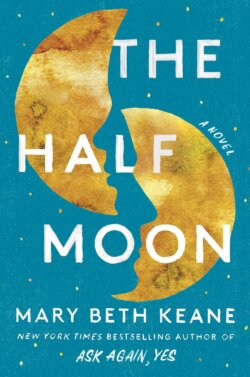★ The Lock-Up
John Banville’s latest Quirke/Strafford mystery, The Lock-Up, stretches the boundaries of the genre. Ostensibly a police procedural set in 1958 Dublin, The Lock-Up is far more interested in its protagonists’ inner lives than it is in their detective work, and rather than celebrate its sleuths as bringers of order and righters of wrongs, it shows how their efforts toward justice can be, ultimately, meaningless. That said, it is well worth the read, because Banville’s characters fairly leap off the page. Pathologist Quirke is irascible as ever, but also lonely and grieving: “The thing about grief was that you could press upon it at its sharpest points and blunt them, only for the bluntness to spread throughout the system and make it ache like one vast bruise.” Detective Inspector St. John Strafford is a Protestant in a Catholic country, and a cop to boot—something for everyone to loathe. Together they investigate the death of Rosa Jacobs, a young Jewish woman with possible links to Wolfgang Kessler, a German refugee who made good in postwar Ireland and now appears to be involved with some shady dealings in the newly established country of Israel. The Lock-Up is beautifully written, the sort of book that makes you pause, reread a line and chew on it for a bit before continuing. Oh, and the ending? Good luck figuring that out before the precise reveal ordained by Banville.
Beware the Woman
Megan Abbott is one of the most skilled architects of suspense alive and has won or been a finalist for just about every major crime fiction award. Her latest thriller, Beware the Woman, finds her in top form once again. As the book opens, Jed and Jacy have just discovered that they are soon to become parents. They plan a holiday in Michigan’s Upper Peninsula to visit Jed’s father, Dr. Ash, who lives in a luxurious “cabin” deep in the woods. As experienced readers will know, going to visit reclusive relatives in remote forests is like opening the attic door in a horror movie: guaranteed drama. As a retired physician, Dr. Ash is solicitous to a fault about Jacy’s pregnancy. When minor complications arise, he becomes rather heavy-handed about directing her care, never mind that he has not been a practicing physician for decades. Understandably, Jacy takes some exception to this but finds, to her dismay, that her husband has aligned with his father, and she soon becomes a virtual prisoner, held incommunicado. For sheer escalating tension, Beware the Woman rates right up there with Stephen King’s Misery; it just shouts to be read in one sitting.
The Last Drop of Hemlock
Katharine Schellman’s second Vivian Kelly mystery, The Last Drop of Hemlock, is set in Prohibition-era New York City. Vivian is a seamstress and delivery girl by day but a waitress at a speak-easy by night, doing the Charleston with lonely men in return for drinks. Said speak-easy, the Nightingale, is decidedly illegal and only exists as a result of liberally greased palms. Thus, an element of criminal activity is never far from the forefront. This time out, Vivian uses her connections to take a second look at a death that was initially ruled a suicide. The victim was Uncle Pearlie, a bouncer at the Nightingale who had purportedly just made a fortune via mysterious means. But when Vivian and her band of ne’er-do-wells go to his home, they find that his secret cache of cash has been emptied. Any lingering doubts that he was murdered are erased when his pregnant girlfriend comes forward and reveals that Pearlie’s windfall involved some particularly unpleasant gangsters. In the first book in the series, Last Call at the Nightingale, Schellman introduced a large and interesting cast of characters while also spinning a consistently suspenseful yarn. That is certainly still the case in book two, as Schellman tops herself in nearly every category.
The Pigeon
Joe Brody, aka Joe the Bouncer, returns in David Gordon’s The Pigeon, the latest entertaining entry in the popular series. It should be noted that bouncer does not begin to encompass Joe’s duties. He serves as a sheriff of sorts for the criminal underworld of New York City, a mediator for organizations not exactly noted for solving disputes within the confines of the legal system. His longtime pal Gio sets him up with what should be an easy gig, and one that pays well too: recover a gangster’s stolen racing pigeon. The bird’s worth is in the neighborhood of $1 million, and Joe will collect a 5% reward upon recovery. Under normal circumstances, it would be a simple B & E—stuff the bird into a paper bag and exit stage left. But it turns out that the pricey Central Park-adjacent apartment building the bird is being kept in features one of the most sophisticated security systems this side of Fort Knox. Before Joe can snatch the pigeon, a squad of hit men is hot on his trail. He makes good his escape through a long-unused dumbwaiter, but his troubles are far from over. His FBI agent girlfriend is questioning her judgment in being associated with the criminal element, the gangster is still clamoring for his missing pigeon and the hit men know where Joe lives, works and plays. There is plenty of humor in the mix, as in an Ed McBain or Elmore Leonard novel, and plenty of action, too, realistically delivered without being egregiously graphic.






























































